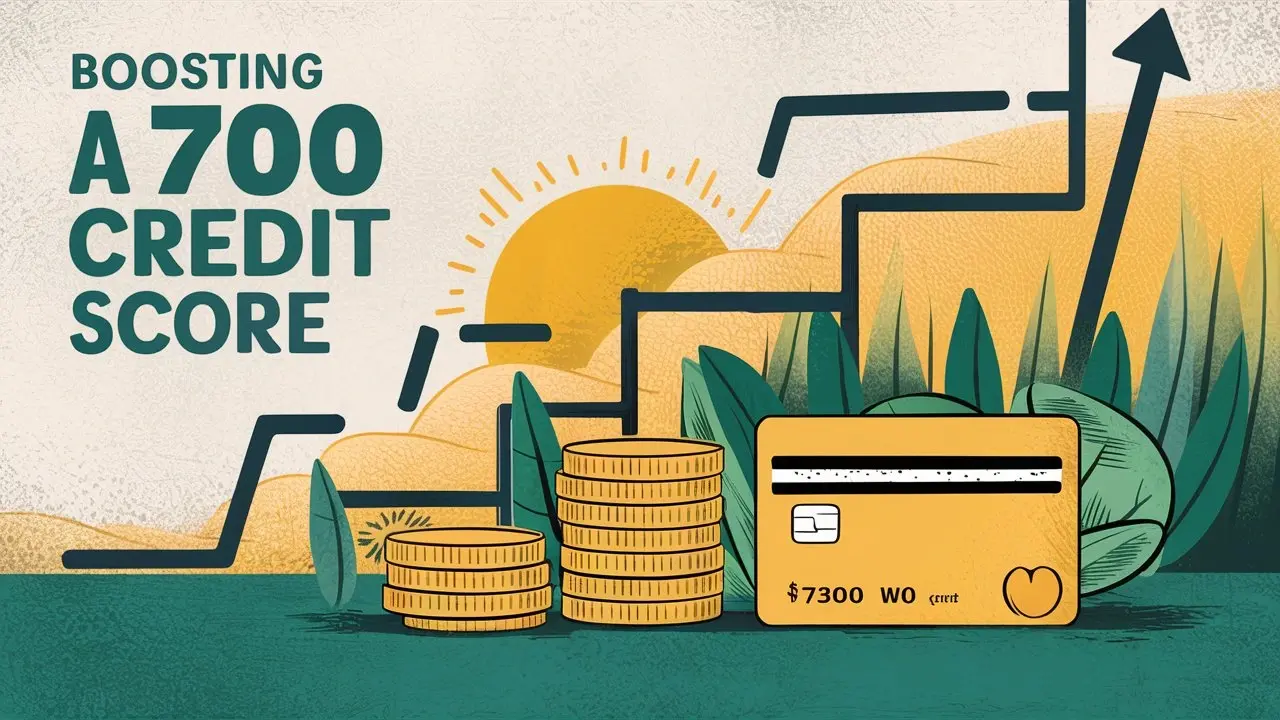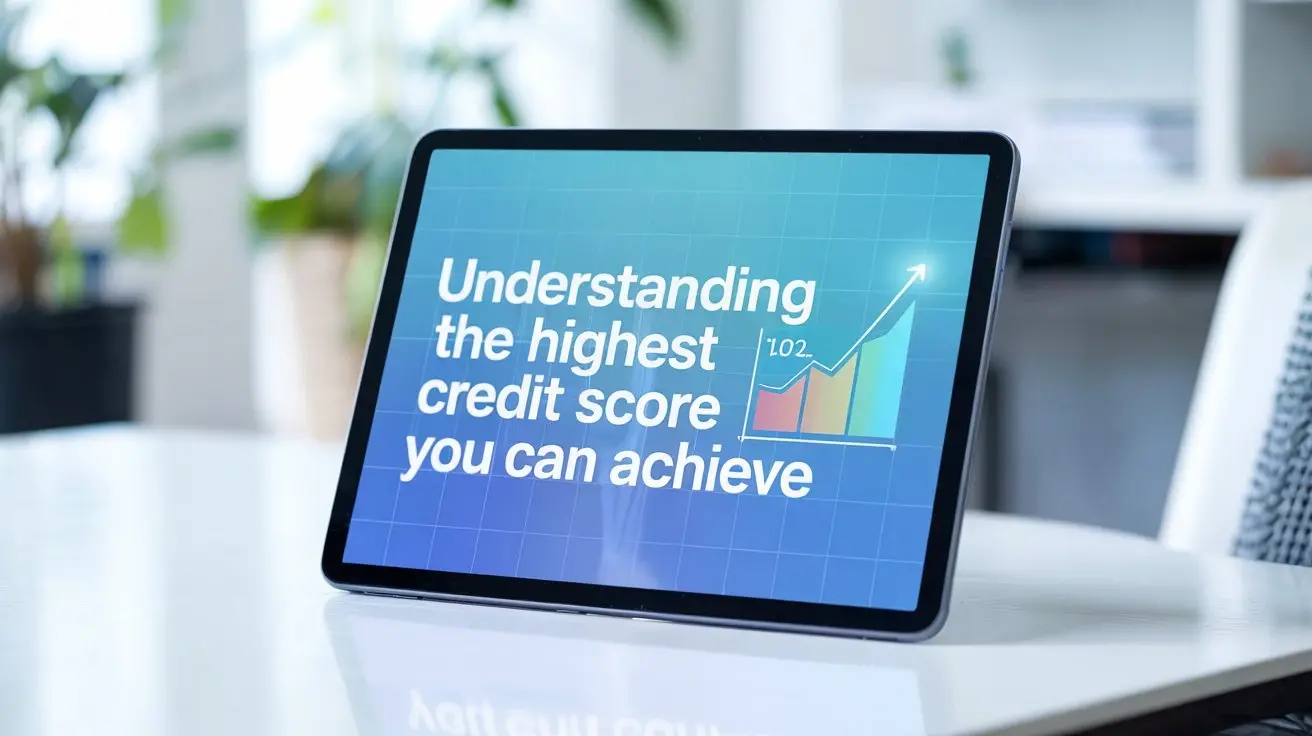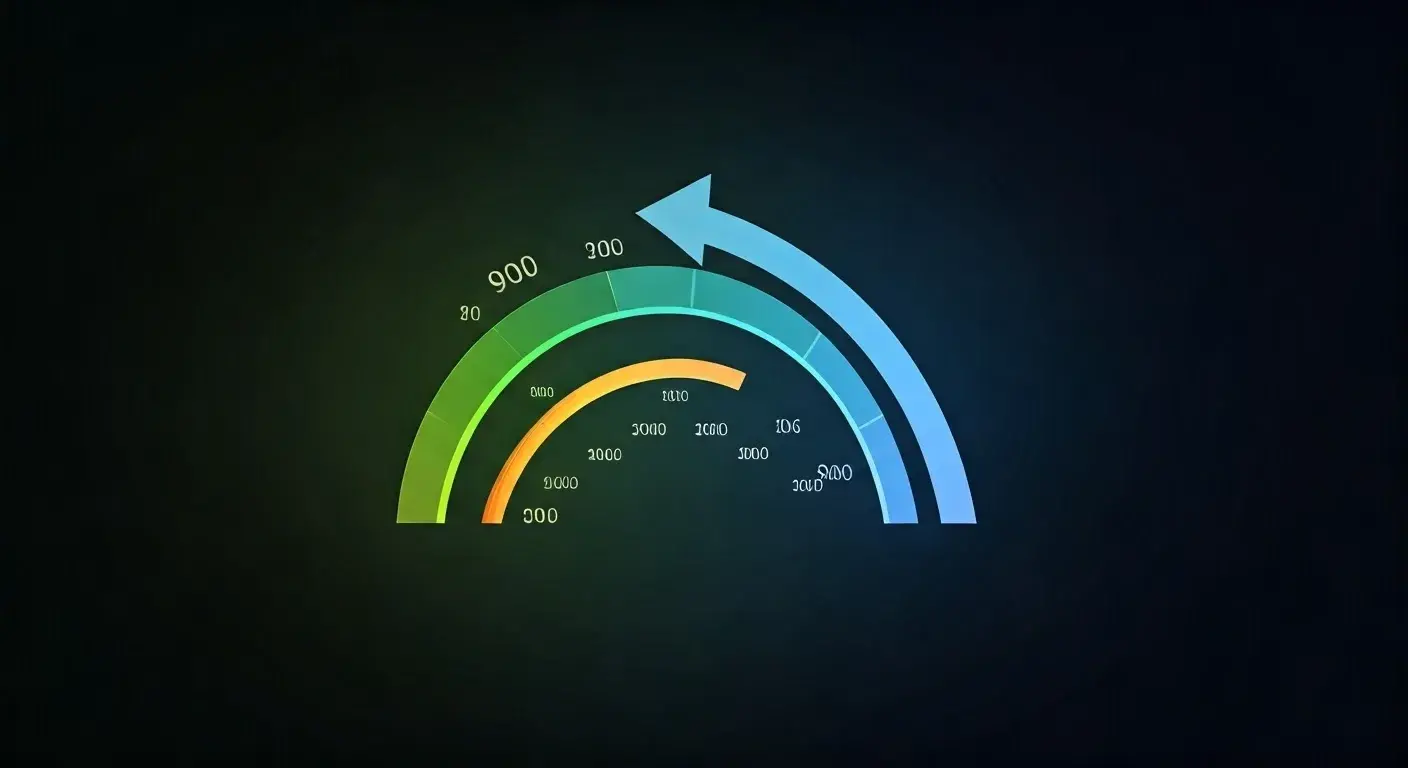-
Posted on: 27 Sep 2024

-
Unlock the power of a 700 credit score with our comprehensive guide. Discover actionable strategies and proven tips to significantly boost your creditworthiness, opening doors to better loan terms, lower interest rates, and improved financial opportunities. Start your journey to a stronger financial future today.
Understanding Credit Scores and Why 700 Matters
In the complex world of personal finance, your credit score is a three-digit number that speaks volumes about your financial reliability. It’s a critical metric used by lenders, landlords, and even employers to assess your risk as a borrower or tenant. While various scoring models exist, the FICO score and VantageScore are the most prevalent, typically ranging from 300 to 850. Scores are categorized into several tiers, including Poor (below 580), Fair (580-669), Good (670-739), Very Good (740-799), and Excellent (800-850). Reaching a score of 700 is a significant milestone, often considered the gateway to "good" credit. This benchmark signifies to lenders that you are a responsible borrower, making you eligible for a wider array of financial products and, crucially, at more favorable terms. A score of 700 or higher can translate into lower interest rates on mortgages, auto loans, and credit cards, saving you thousands of dollars over the life of your loans. It can also improve your chances of getting approved for rental apartments, securing better insurance premiums, and even landing certain job opportunities. For instance, in 2025, the average interest rate for a 30-year fixed-rate mortgage for someone with a credit score above 740 was approximately 6.5%, while for someone with a score between 620-639, it could be as high as 7.8% or more. This stark difference highlights the tangible financial benefits of achieving a 700 credit score.
What is a Credit Score?
At its core, a credit score is a numerical representation of your creditworthiness. It's calculated by credit bureaus (Equifax, Experian, and TransUnion) based on the information in your credit reports. This information includes your payment history, amounts owed, length of credit history, credit mix, and new credit. Think of it as a financial report card that summarizes how you’ve managed debt in the past.
Why is 700 a Target Score?
The 700-point mark is widely recognized as the threshold for good credit. While excellent credit scores (above 740) unlock the absolute best terms, a 700 score significantly broadens your options and improves your financial standing. It demonstrates a consistent pattern of responsible credit behavior, signaling to lenders that you are a lower risk. This means:
- Lower Interest Rates: This is perhaps the most significant benefit. A 700+ score can save you considerable money on interest over time.
- Higher Approval Odds: You'll have a much better chance of being approved for loans, credit cards, and even rental applications.
- Better Terms and Conditions: Beyond interest rates, you may qualify for higher credit limits, more generous rewards programs, and more flexible repayment options.
- Reduced Security Deposits: Some utility companies and service providers may waive or reduce security deposits for individuals with good credit.
The Impact of Credit Scores in 2025
The importance of credit scores continues to grow. In 2025, financial institutions are increasingly relying on sophisticated algorithms that heavily weigh creditworthiness. This means that even small improvements in your score can have a noticeable impact on your financial life. For example, a recent study indicated that individuals with credit scores in the 700-750 range typically pay 20-30% less for auto insurance premiums compared to those with scores in the 600-650 range. This demonstrates that a 700 score isn't just about borrowing money; it affects various aspects of your financial well-being.
The Building Blocks of a 700+ Credit Score
Achieving a credit score of 700 or higher isn't a matter of luck; it's the result of consistent, responsible financial behavior. Several key factors contribute to your credit score calculation, and understanding them is the first step toward improvement. These factors are weighted differently, meaning some have a more significant impact than others. By focusing your efforts on the most influential elements, you can strategically build a strong credit profile.
Payment History (Approximately 35% of Score)
This is the single most important factor. Lenders want to see that you pay your bills on time, every time. Late payments, missed payments, and defaults can severely damage your score. Even a single 30-day late payment can have a lasting negative effect. The longer you maintain a consistent record of on-time payments, the more positively it impacts your score.
Amounts Owed / Credit Utilization Ratio (Approximately 30% of Score)
This refers to the amount of credit you are using compared to your total available credit. It’s often expressed as a percentage, known as the credit utilization ratio (CUR). For example, if you have a credit card with a $10,000 limit and you owe $3,000 on it, your CUR is 30%. Experts generally recommend keeping your CUR below 30%, and ideally below 10%, for the best results. High utilization signals to lenders that you might be overextended and at a higher risk of default.
Length of Credit History (Approximately 15% of Score)
The longer you’ve been managing credit responsibly, the better. This factor considers the age of your oldest account, the age of your newest account, and the average age of all your accounts. A longer credit history demonstrates a proven track record of managing credit over time. This is why it's generally advisable not to close old, unused credit accounts, as they contribute to the average age of your credit history.
Credit Mix (Approximately 10% of Score)
This factor looks at the different types of credit you have. Having a mix of credit, such as revolving credit (credit cards) and installment loans (mortgages, auto loans, student loans), can be beneficial. It shows that you can manage various forms of debt. However, this factor is less impactful than payment history or credit utilization, and you shouldn't open new accounts solely to diversify your credit mix.
New Credit (Approximately 10% of Score)
This factor considers how many new credit accounts you've opened recently and how many hard inquiries you have on your credit report. Opening too many new accounts in a short period can signal to lenders that you might be in financial distress or taking on too much debt. Each time you apply for credit, a lender typically performs a "hard inquiry," which can slightly lower your score for a short period.
Understanding the Interplay
It's important to understand that these factors don't operate in isolation. For instance, if you have a long credit history, but it's filled with late payments, the positive impact of the history length will be overshadowed by the negative impact of missed payments. Similarly, a high credit utilization ratio can significantly drag down your score, even if you have a long history of on-time payments on other accounts. Focusing on improving the most heavily weighted factors – payment history and credit utilization – will yield the most significant results in your quest to boost your score to 700 and beyond.
Key Strategies for Boosting Your Score
Now that you understand the components of a credit score, let's dive into the actionable strategies you can implement to improve yours. These methods are designed to positively influence the key factors that lenders and credit bureaus evaluate. Consistency and patience are crucial; significant improvements rarely happen overnight.
1. Pay All Bills On Time, Every Time
This cannot be stressed enough. Make it a priority to pay at least the minimum amount due on all your credit accounts by the due date. To ensure you never miss a payment:
- Set Up Automatic Payments: Link your bank account to your credit accounts for automatic deductions. Ensure you always have sufficient funds in your account to cover these payments.
- Create Calendar Reminders: Use your phone or calendar to set reminders a few days before each bill is due.
- Enroll in Bill Pay Services: Many banks offer services that allow you to manage and pay all your bills from one central platform.
If you've already missed a payment, contact the creditor immediately to see if you can make a payment arrangement or have the late payment removed from your report, especially if it was a one-time oversight.
2. Reduce Your Credit Utilization Ratio (CUR)
This is a powerful lever for score improvement. Aim to keep your CUR below 30%, and ideally below 10%.
- Pay Down Balances: The most direct way to lower your CUR is to pay down the outstanding balances on your credit cards. Focus on cards with the highest utilization first.
- Increase Credit Limits: If your spending habits are under control, contact your credit card issuers and request a credit limit increase. This will instantly lower your CUR, provided your balance remains the same. Be aware that requesting a limit increase might involve a hard inquiry.
- Spread Out Your Spending: If possible, distribute your spending across multiple credit cards rather than maxing out one.
Example: Sarah has a credit card with a $5,000 limit and a $4,500 balance. Her CUR is 90%. If she pays down the balance to $1,500, her CUR drops to 30%, which is a significant improvement. If she also gets a limit increase to $7,500 and maintains the $1,500 balance, her CUR becomes 20%.
3. Avoid Opening Too Many New Accounts
While new credit can eventually contribute to your credit mix, opening multiple accounts in a short period can negatively impact your score. Each application typically results in a hard inquiry, and a sudden influx of new accounts can make you appear risky to lenders. If you need to open new credit, do so strategically and space out applications.
4. Dispute Errors on Your Credit Report
Mistakes happen. Incorrect information on your credit report can unfairly lower your score. You are entitled to a free credit report from each of the three major bureaus annually at AnnualCreditReport.com. Review your reports carefully for:
- Accounts that aren't yours.
- Incorrectly reported late payments.
- Incorrectly reported balances.
- Duplicate negative entries.
If you find errors, dispute them directly with the credit bureau. They are required to investigate and remove inaccurate information.
5. Keep Old, Unused Accounts Open (If No Annual Fee)
As mentioned earlier, the length of your credit history is a factor. Closing an old credit card account, especially one with a zero balance, can reduce the average age of your accounts and potentially increase your overall credit utilization ratio if it was a significant portion of your available credit. If the account has no annual fee and you don't use it, simply keep it open and make an occasional small purchase to keep it active.
6. Consider a Secured Credit Card or Credit-Builder Loan
If you have a low credit score or no credit history, these tools can be invaluable. A secured credit card requires a cash deposit that typically becomes your credit limit. Using it responsibly and paying it off each month can help build a positive payment history. A credit-builder loan is a small loan where the funds are held by the lender until you've paid off the loan, demonstrating your ability to make installment payments.
Managing Credit Responsibly for Long-Term Gains
Boosting your credit score to 700 is an excellent achievement, but maintaining it and continuing to grow requires ongoing responsible credit management. This isn't just about hitting a number; it's about establishing sustainable financial habits that will serve you well throughout your life. Long-term success hinges on consistent practices that demonstrate reliability and trustworthiness to lenders.
The Power of Consistency
The most effective way to manage credit responsibly is through consistency. This means:
- Regularly Reviewing Your Credit Reports: Don't wait until you need a loan to check your credit. Make it a habit to review your reports at least annually, or quarterly if you're actively working on improving your score. This allows you to catch any potential errors or fraudulent activity early.
- Maintaining Low Credit Utilization: Aim to keep your credit utilization ratio consistently low. This isn't a one-time fix; it requires ongoing attention to your spending and payment habits.
- Making On-Time Payments: As emphasized before, consistent on-time payments are the bedrock of a good credit score. Automating payments or setting up robust reminder systems can help ensure this consistency.
Understanding Different Credit Products
As your credit score improves, you may qualify for a wider range of credit products. It’s important to understand the purpose and implications of each:
- Credit Cards: Excellent for building credit history and earning rewards. Use them for everyday purchases you can afford to pay off immediately. Be wary of carrying balances, as high interest can negate rewards and harm your utilization ratio.
- Installment Loans (Mortgages, Auto Loans, Personal Loans): These involve borrowing a fixed amount and repaying it over a set period with regular payments. They are good for financing large purchases and can help diversify your credit mix. The key is to borrow only what you need and can comfortably repay.
- Lines of Credit: Similar to credit cards, but often with larger limits and potentially lower interest rates. They offer flexibility for managing expenses but require careful monitoring to avoid overspending.
The Importance of a Healthy Credit Mix
While not the most heavily weighted factor, a diverse credit mix can still contribute positively to your score. This means having experience managing different types of credit, such as revolving credit (credit cards) and installment loans (mortgages, auto loans). If you only have credit cards, consider adding an installment loan responsibly when you have a genuine need, like purchasing a car or a home. However, never take out a loan solely to improve your credit mix if you don't need it, as the interest costs and potential for mismanagement outweigh the benefits.
Building a Long-Term Credit Strategy
Think of your credit score not as a destination, but as a journey. A long-term strategy involves:
- Strategic Use of Credit: Use credit as a tool to build wealth and achieve financial goals, rather than a means to live beyond your means.
- Avoiding Unnecessary Debt: Only borrow what you can afford to repay. High-interest debt can quickly spiral out of control.
- Regular Financial Check-ups: Schedule time periodically (e.g., quarterly or semi-annually) to review your credit reports, check your credit score, and assess your overall financial health.
Case Study: Maria's Journey
Maria started with a credit score of 580. She diligently followed these steps:
- She set up auto-pay for all her bills to ensure on-time payments.
- She focused on paying down her credit card balances, reducing her utilization from 85% to 25% over 18 months.
- She kept her oldest credit card open, even though she rarely used it.
- She reviewed her credit report every six months and disputed a small error that was quickly corrected.
Within two years, Maria's credit score climbed to 725, allowing her to refinance her car loan at a significantly lower interest rate, saving her over $1,000 annually.
Common Pitfalls to Avoid on Your Credit-Boosting Journey
While the strategies for improving your credit score are straightforward, many people stumble due to common mistakes. Being aware of these pitfalls can help you navigate your credit-improvement journey more effectively and avoid setbacks. Recognizing and sidestepping these issues is just as important as implementing positive actions.
1. Closing Old Credit Card Accounts
As discussed, closing old accounts can negatively impact your credit utilization ratio and the average age of your credit history. Even if you don't use an old card, keeping it open (especially if it has no annual fee) can benefit your score. If you're concerned about the temptation to overspend, ask the issuer to lower the credit limit instead of closing the account.
2. Applying for Too Much Credit at Once
Opening several new credit accounts in a short period can trigger multiple hard inquiries, which can temporarily lower your score. It can also signal to lenders that you're desperate for credit or taking on excessive debt. Space out your credit applications and only apply when you genuinely need new credit.
3. Missing Payments or Paying Late
This is the most damaging mistake you can make. Even a single 30-day late payment can drop your score significantly and remain on your report for up to seven years. Prioritize making at least the minimum payment on time for all your accounts. If you anticipate a missed payment, contact your creditor immediately to discuss options.
4. Maxing Out Credit Cards
High credit utilization is a major red flag for lenders. Aim to keep your utilization ratio below 30%, and ideally below 10%. Maxing out cards not only hurts your score but also makes it harder to pay off debt due to high interest charges.
5. Ignoring Your Credit Reports
Errors on your credit report can drag down your score. Not checking your reports regularly means these errors could go unnoticed for years, hindering your progress. Take advantage of your free annual reports from Equifax, Experian, and TransUnion to review for inaccuracies.
6. Co-signing Loans for Others
While it might seem like a favor, co-signing a loan means you are legally responsible for the debt if the primary borrower defaults. Their missed payments will appear on your credit report and damage your score. Only co-sign if you are fully prepared to take on the debt yourself.
7. Falling for Credit Repair Scams
Be wary of companies that promise to remove negative information from your credit report that is accurate and timely. Legitimate credit repair takes time and consistent effort. The Federal Trade Commission (FTC) offers guidance on avoiding these scams.
8. Not Understanding the Impact of Debt Settlement or Bankruptcy
While these can be necessary solutions for overwhelming debt, they have a severe and long-lasting negative impact on your credit score. They will remain on your report for seven to ten years, making it difficult to obtain credit during that time. Focus on managing debt responsibly to avoid such drastic measures.
Table: Common Pitfalls vs. Smart Strategies
Pitfall Consequence Smart Strategy Closing Old Accounts Reduces average account age, increases utilization. Keep old accounts open (if no fee), or ask for limit reduction. Too Many New Applications Multiple hard inquiries, signals high risk. Space out applications; apply only when necessary. Missed/Late Payments Significant score drop, stays on report for years. Automate payments, set reminders, pay at least minimum on time. Maxing Out Cards High credit utilization ratio (CUR), signals financial strain. Keep CUR below 30%, ideally below 10%; pay down balances. Ignoring Credit Reports Errors go uncorrected, potentially lowering score. Review reports annually from AnnualCreditReport.com; dispute errors. Advanced Tactics for Accelerated Credit Score Growth
Once you've mastered the fundamentals of responsible credit management and are consistently making on-time payments and keeping your utilization low, you might be looking for ways to accelerate your credit score growth. These advanced tactics can help you push your score higher, potentially reaching the "very good" or "excellent" tiers faster. They require a bit more strategic planning and understanding of how credit scoring models work.
1. Become an Authorized User on a Well-Managed Account
If you have a trusted friend or family member with an excellent credit history and a long-standing, low-utilization credit card account, you could ask to be added as an authorized user. When you are added to an account, the positive history of that account (payment history, age, utilization) can be reflected on your credit report. This can provide a significant boost, especially if you have a thin credit file. However, ensure the primary account holder is responsible, as their negative activity could also impact you.
Example: John's daughter, Sarah, has a credit score of 550 and limited credit history. Her mother, Emily, has a credit card with a 15-year history, a $20,000 limit, and always keeps a balance below $1,000. Emily adds Sarah as an authorized user. The positive history of Emily's card now appears on Sarah's credit report, potentially increasing her average account age and showing excellent utilization, which could help boost her score.
2. Negotiate with Creditors for Debt Management
If you have past-due accounts or are struggling with overwhelming debt, proactive negotiation can be beneficial. Instead of letting accounts go to collections, contact your creditors to discuss options like a payment plan, a reduced interest rate, or even a debt management program. While some of these actions might be noted on your credit report, they are often less damaging than a full default or charge-off and demonstrate a commitment to resolving your debts.
3. Utilize Experian Boost™ or Similar Services
Services like Experian Boost™ allow you to add positive payment histories for utilities, phone bills, and streaming services to your Experian credit report. If these payments are made on time, they can potentially increase your Experian FICO score. While this is specific to Experian and may not affect scores from other bureaus, it can be a valuable tool for those looking to improve their Experian score quickly, especially if they have a thin credit file.
Note: The impact of these services can vary, and not all lenders use scores that incorporate this data. Always check with your lender to understand which scores they use.
4. Strategic Use of Balance Transfers (with Caution)
If you have high-interest credit card debt, a balance transfer to a card with a 0% introductory APR can save you money on interest and help you pay down the principal faster. This, in turn, can lower your credit utilization. However, this tactic comes with risks:
- Transfer Fees: Most balance transfer cards charge a fee (typically 3-5% of the transferred amount).
- Limited Time: The 0% APR is temporary. You must pay off the balance before the introductory period ends, or you'll face high standard interest rates.
- New Purchases: Be careful not to rack up new debt on the balance transfer card, as many issuers apply new payments to the lowest APR balance first (often the 0% intro rate), leaving your old debt to accrue interest.
This strategy is most effective when combined with a plan to aggressively pay down the transferred balance.
5. Understand and Leverage Credit Scoring Models
Different credit scoring models (e.g., FICO 8, FICO 9, VantageScore 3.0, VantageScore 4.0) have slightly different algorithms and weigh factors differently. For example, newer models like FICO 9 and VantageScore 4.0 tend to ignore medical debt and give less weight to paid collections. Understanding which models your lenders use can help you prioritize your efforts. For instance, if a lender uses a newer model, focusing on paying off old collections might be less critical than maintaining low utilization on active accounts.
6. Consider a Personal Loan to Consolidate Debt
If you have multiple high-interest debts, consolidating them into a single personal loan with a lower interest rate can simplify your payments and potentially save you money. If you manage the personal loan responsibly by making on-time payments, it can also positively impact your credit mix and payment history. However, ensure the interest rate and fees of the personal loan are genuinely lower than your current debt obligations.
Monitoring Your Progress and Maintaining a Healthy Score
Reaching a 700 credit score is a significant achievement, but the work doesn't stop there. Consistent monitoring and maintenance are crucial to ensure your score remains strong and continues to grow. Think of it like maintaining a healthy lifestyle; regular check-ups and consistent habits are key to long-term success. In 2025, access to your credit information is easier than ever, making regular monitoring more practical.
Why Regular Monitoring is Essential
- Catching Errors: Credit reports can contain errors. Regularly reviewing them allows you to identify and dispute inaccuracies that could be negatively impacting your score.
- Detecting Fraud: Monitoring your credit can help you spot fraudulent activity early. If an account appears on your report that you didn't open, it's a sign of identity theft.
- Tracking Progress: Seeing your score increase can be motivating. It also helps you understand which of your strategies are working best.
- Staying Informed: Credit scoring models and lending practices can evolve. Regular monitoring keeps you aware of your financial standing in the current credit landscape.
How to Monitor Your Credit
There are several convenient ways to keep tabs on your credit health:
- Free Annual Credit Reports: As mandated by the Fair Credit Reporting Act (FCRA), you are entitled to one free credit report from each of the three major credit bureaus (Equifax, Experian, and TransUnion) every 12 months. Visit AnnualCreditReport.com to request yours. It's advisable to stagger these requests throughout the year (e.g., request one every four months) to monitor your credit more frequently.
- Credit Monitoring Services: Many credit card companies, banks, and third-party services offer free credit score monitoring. These services often provide access to your FICO or VantageScore, along with alerts for significant changes in your credit report. While convenient, understand what information is being provided and if there are any limitations.
- Credit Bureaus Directly: Equifax, Experian, and TransUnion also offer their own credit monitoring services, which often include detailed reports, scores, and alerts. Some of these services may come with a fee after an initial trial period.
Maintaining Your 700+ Score
Once you've achieved your target score, the principles for maintaining it are the same ones that helped you get there:
- Continue On-Time Payments: This is non-negotiable. Make it a habit to pay all your bills on or before the due date.
- Keep Credit Utilization Low: Aim to keep your credit utilization ratio below 30%, and ideally below 10%. Avoid carrying high balances on your credit cards.
- Limit New Credit Applications: Only apply for new credit when you genuinely need it. Avoid opening multiple accounts in a short timeframe.
- Review Your Credit Reports Regularly: Continue to check your credit reports for errors or suspicious activity.
- Avoid Closing Old Accounts: Unless there's a compelling reason (like a high annual fee you can't justify), keep your older, established credit accounts open.
- Be Mindful of New Debt: Before taking on new debt, consider how it will impact your credit utilization and your ability to make timely payments.
The Long-Term View
A strong credit score is a powerful financial asset. By consistently monitoring your credit and adhering to responsible credit management practices, you not only maintain your 700+ score but also build a foundation for future financial success. This includes qualifying for the best mortgage rates when you're ready to buy a home, securing favorable terms on auto loans, and enjoying the peace of mind that comes with financial stability. In 2025, a strong credit score remains a key indicator of financial health and a gateway to achieving your most important financial goals.
Conclusion
Achieving a 700 credit score is a tangible and highly attainable goal that unlocks significant financial advantages. By understanding the core components of your credit score—payment history, credit utilization, length of credit history, credit mix, and new credit—you can strategically implement proven methods to elevate your score. Prioritizing on-time payments, diligently managing your credit utilization ratio, and avoiding common pitfalls are the cornerstones of this process. Furthermore, advanced tactics like becoming an authorized user or leveraging credit-building tools can accelerate your progress. Remember that consistent monitoring and responsible management are key not only to reaching your target score but also to maintaining it for long-term financial well-being. Start implementing these strategies today and pave your way to better loan terms, lower interest rates, and a more secure financial future. Your journey to a 700 credit score begins with informed action and sustained effort.
Faq
What is a 700 credit score?
A 700 credit score is considered good. It shows you're a responsible borrower. This score is key for loans, credit cards, mortgages, and even renting.
Why is a 700 credit score important?
Having a 700 score means better deals. You might get lower interest rates and better loan terms. It also shows you're financially responsible.
How can I monitor my credit report?
It's important to check your credit report often. This helps spot errors and ensures your history is correct.
What strategies can I use to improve or maintain my 700 credit score?
To keep your score high, focus on payment history and credit use. Pay bills on time and keep credit card balances low. This helps your score.
How does my credit mix affect my 700 credit score?
Your credit mix matters too. Having different types of credit shows you can handle various accounts well. This can boost your score.
How does my debt-to-income ratio affect my 700 credit score?
Your debt-to-income ratio is key. A low ratio shows you can manage your debt. This improves your creditworthiness.
What credit score pitfalls should I avoid to preserve my 700 credit score?
Avoid late payments and excessive credit card use. These can harm your score. Keep your payments on time and use credit wisely.
How does a 700 credit score affect loan applications?
A 700 score makes you a reliable borrower. You might get better loan terms, like lower interest rates. This can save you money.
What tips can I follow to maintain a high 700 credit score?
To keep a high score, stay vigilant and responsible. Check your credit reports for errors and use credit cards wisely. This helps keep your score excellent.
How does credit utilization affect my 700 credit score?
Credit utilization is crucial. Keep your balances low to show you're responsible. This helps maintain a high score.
Why is payment history important for maintaining a 700 credit score?
Your payment history is vital. On-time payments boost your score. Even small payments on time help your creditworthiness.
How can I dispute errors on my credit report to maintain my 700 credit score?
Regularly check your credit report for errors. Dispute any inaccuracies with the credit bureaus. This ensures your score stays high.











